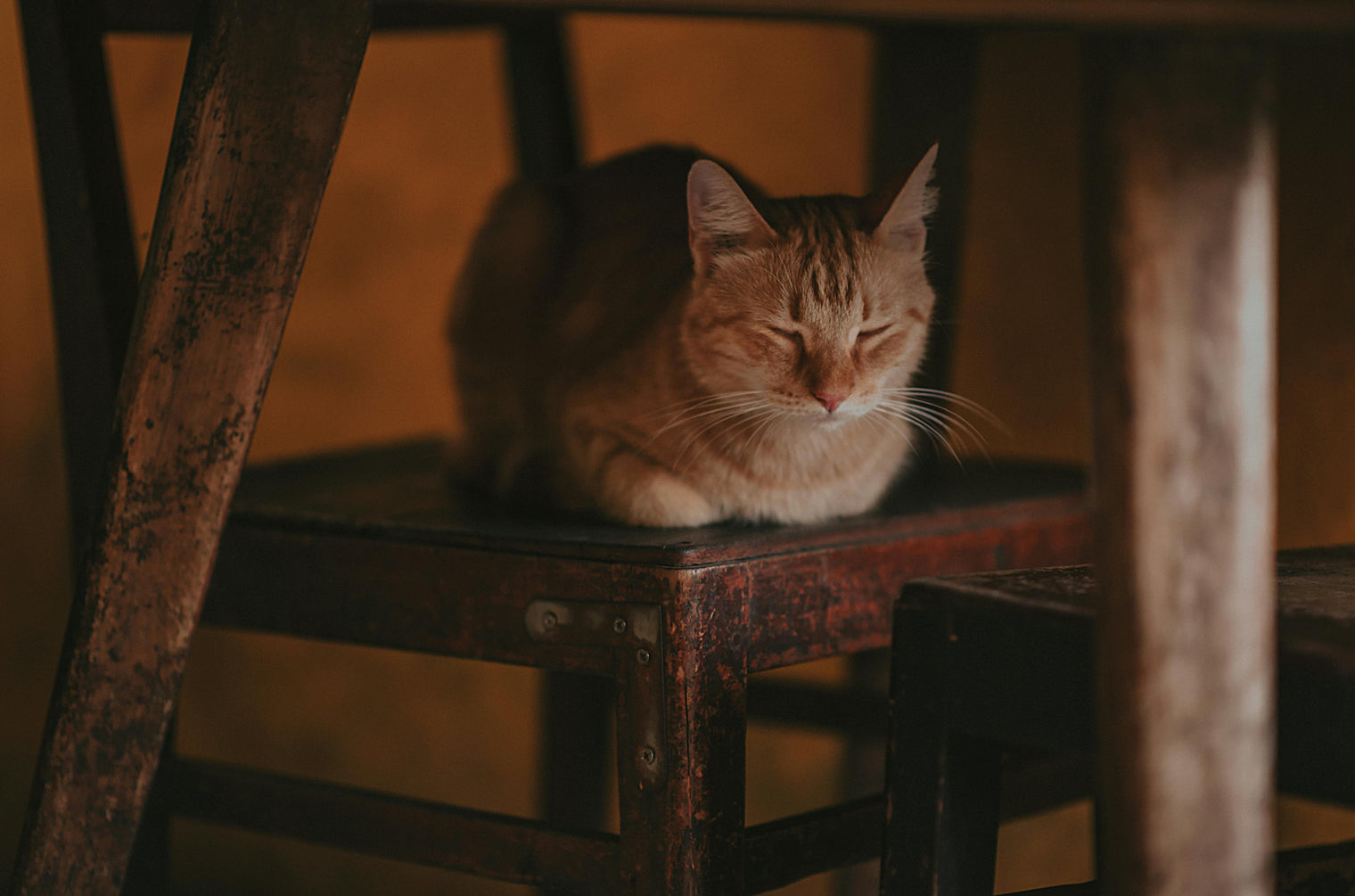HOW TO INTRODUCE YOUR CAT TO
NEW FURNITURE
Welcoming new furniture into your home is an exciting change, but it can be daunting when you have a furry friend who might not be as enthusiastic about the change as you are. Cats, creatures of habit, can sometimes take time to adjust to new surroundings, especially when it involves their territory. However, by prioritizing your cat's comfort and well-being, you can ensure a smooth transition for both your cat and your latest furniture. This process requires patience, understanding, and a few strategic steps.
1. Gradual Introduction
Cats are naturally curious but can also be wary of sudden changes. Start by placing the new furniture in a room where your cat spends a lot of time. Allow them to explore it at their own pace. Avoid forcing them to interact with it immediately; let them approach it when they feel comfortable.
2. Familiar Scents
Cats rely heavily on their sense of smell to navigate their environment. To help them adjust to the new furniture, incorporate familiar scents. Rub a soft cloth or towel on your cat's cheeks, where scent glands are located, and gently rub the same cloth on the furniture. Repeat this process daily for a week. This will transfer your cat's scent onto the new piece, making it feel more familiar and less threatening.
3. Positive Reinforcement
Encourage your cat to associate the new furniture with positive experiences. Start by placing treats or a favorite toy near the furniture. This will create a positive association with the new piece. When your cat shows curiosity or interacts with the new furniture, reward them with praise and a treat. This positive reinforcement can help alleviate any anxiety or apprehension your cat may have.
4. Redirect Scratching Behavior
If your cat is prone to scratching furniture, it's important to understand why. Cats scratch to mark their territory, stretch their muscles, and remove the outer layer of their claws. Provide appropriate alternatives, such as scratching posts or pads. Place these items near the new furniture to redirect their scratching behavior. You can also use double-sided tape or aluminum foil to deter them from scratching the new piece until they become accustomed to it.
5. Patience and Observation
Every cat is unique, and some may adjust more quickly than others. Be patient and observant of your cat's behavior during the transition period. If they seem stressed or anxious, provide them extra reassurance and comfort. Conversely, offer encouragement and praise if they show signs of curiosity and exploration.
6. Consistency is Key
Maintain consistency in your interactions with your cat and the new furniture. Stick to established routines for feeding, playtime, and affection to provide stability during the transition. Consistency will help your cat feel secure in their environment and facilitate a smoother adjustment to the new furniture.
7. Seek Professional Advice if Needed
If your cat is particularly resistant to the new furniture or displays signs of distress that persist over time, consider seeking advice from a veterinarian or animal behaviorist. They can provide personalized guidance and strategies that have been proven effective in helping cats adapt to changes. This reassurance can help you feel confident and secure in your ability to help your cat adjust to the new furniture.
In conclusion, introducing your cat to new furniture requires patience, understanding, and a proactive approach. By gradually introducing the latest piece, incorporating familiar scents, using positive reinforcement, redirecting scratching behavior, maintaining consistency, and seeking professional advice, you can help your cat feel comfortable and confident in their updated surroundings. With time and patience, your cat will likely embrace the new furniture as part of their territory, allowing you both to enjoy your home together harmoniously. This transition can lead to a more enriched environment for your cat and a more aesthetically pleasing home for you.
